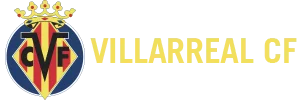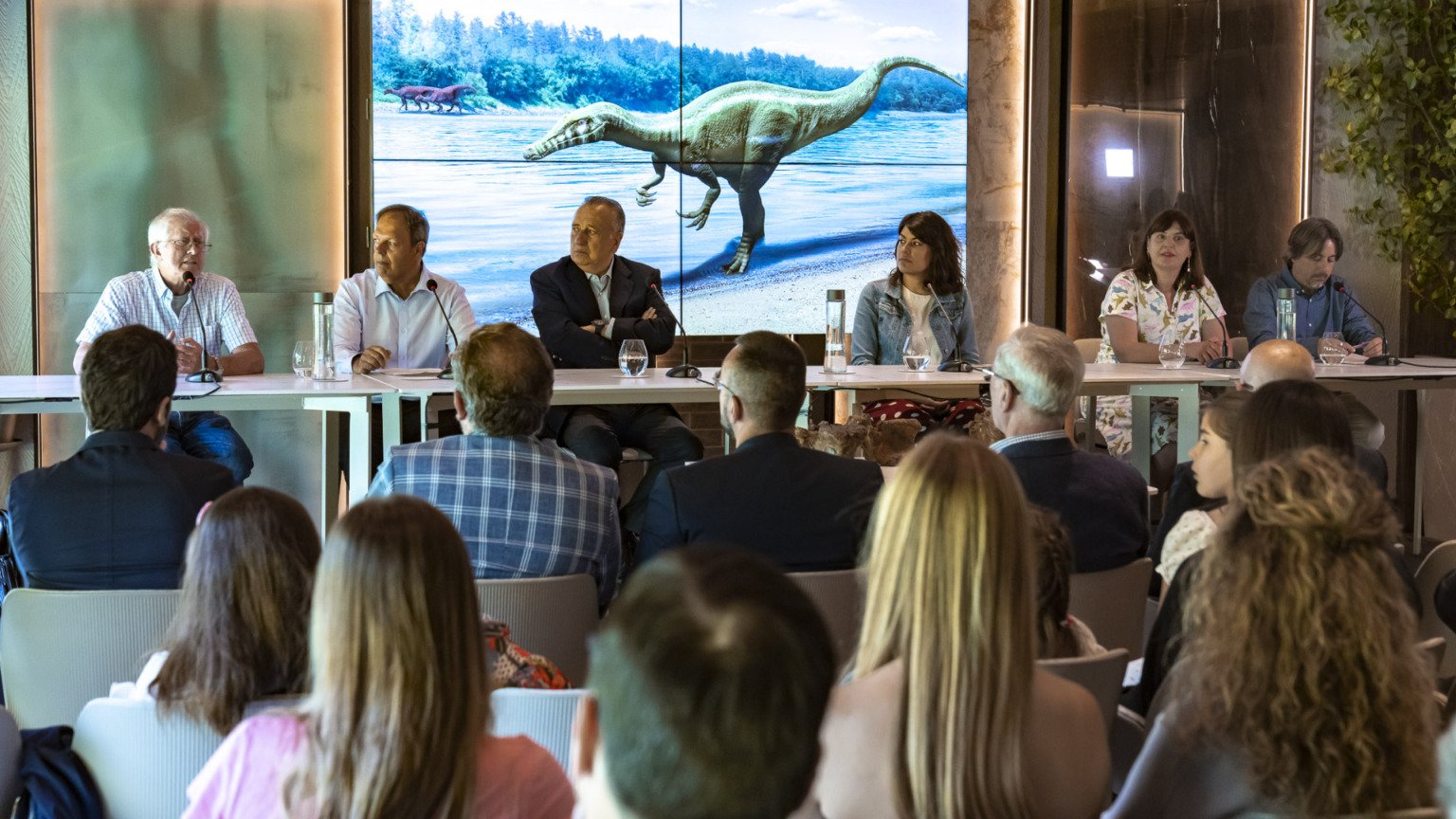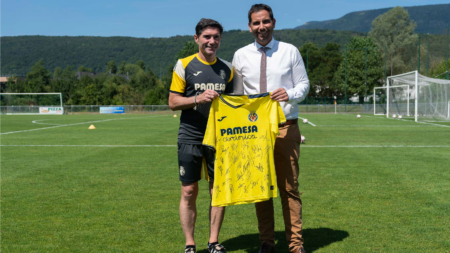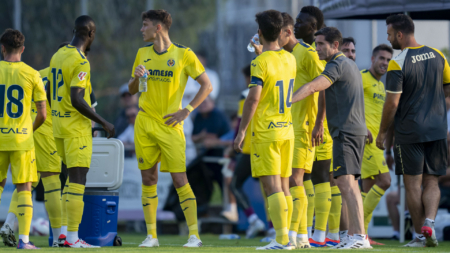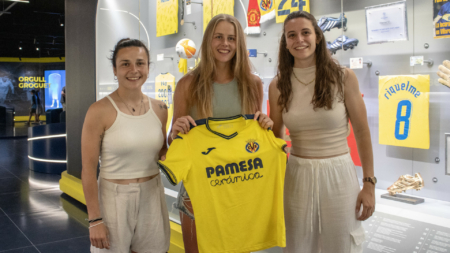Researchers Andrés Santos-Cubedo (UJI), Carlos de Santisteban (UV), Begoña Poza (Grup Guix), Sergi Meseguer (UJI) and the mayors of Cinctorres and Vila-real have presented this discovery
A new dinosaur has been discovered in the province of Castellón. The Protathlitis cinctorrensis, originally from Cinctorres and dedicated to Villarreal CF, has been presented this Friday at the Restaurant El Ceramista of the Estadio de la Cerámica, with the participation of the researchers Andrés Santos-Cubedo (Jaume I University), Carlos de Santisteban (University of Valencia), Begoña Poza (Grup Guix de Vila-real), Sergi Meseguer (Jaume I University), and the mayors of Cinctorres, Mireia Mestre; and of Vila-real, José Benlloch.
Below, you can read the most important points made by those taking part in the presentation.
Andrés Santos-Cubedo, geologist at the Jaume I University:
Why did we give it this name? It had to bear the name of Cinctorres. That was clear to us from the beginning. They have treated us very well and have been very involved and interested in this project. We had to dedicate the species to this town. The idea of dedicating the name of Villarreal CF to it also began to take shape during the final in Gdansk. We thought that if we won the final, we have to do something. I proposed that we dedicate the name to the club. And what better than to dedicate it to their greatest triumph and to do it in the year of the club’s centenary and in the middle of the Sant Pasqual festivities.
The idea of linking Vila-real and Cinctorres goes back a long way. The two towns share several aspects such as the Verge de Gràcia (Virgin of Grace) or the churches that have the same master builders. There are many more coincidences.
We identify with the values they have been defending for the last 25 years. They have become a proud ambassador of the province of Castellón and have taken on the responsibility of spreading its name, tradition and customs throughout Europe. We also want to contribute to the promotion of our province all over the world. Through Endavant, the club promotes tourism, sport, education and the culture of Castellón, just as we try to do through palaeontology. All this made us believe that the club was worthy of this dedication of the genus of a new species of dinosaur in recognition not only of its great sporting performances, but also of its work in other areas.
The Baryonychins were the kings of Europe in the Cretaceous. Like Villarreal in the year 2021. There are many parallels. On 24th May 1998, Villarreal were promoted to the first division; the same year the Ana site was discovered. The first season ended on 26th May 2002; just 19 years later, on the same day, Villarreal became Europa League champions. For us, the first excavation was like winning a title after more than four years since the discovery, but with no work in the area.
In 2002, we started a project that has taken us more than 20 years to find a new dinosaur. Villarreal also worked for two decades until they won their first major title.
Carlos de Santisteban, geologist at the University of Valencia:
Geology is a medium in which fossils are found. In the Els Ports area there is a formation where most of the fossil remains of this age have been found. It is called the Morella Clays formation. It is found in all the municipalities of the region. It covers an area of 54 kilometres, with an average thickness of 30 metres. More remains can still be found and this area is in all the municipalities.
In the palaeontological excavations that have been found in this site, fossils have been discovered. Nature tourism can be promoted. Tourism to see dinosaur sites and museums. All the local councils have this potential and activities can be developed to promote this environment economically. We do research so that local people can improve their economic situation and can develop from these discoveries.
Begoña Poza, geologist of the Grup Guix of Vila-real:
Twenty years have passed since the first excavation in 2002. This project started then. We formed a team to excavate to see what we could find. The surprise was that in the first campaign we found more than 100 fossils. We have done eight campaigns and we have found a thousand fossils. Some dinosaurs were not new to science, like this one, but they have been part of our work.
This is a very important geological area. The geology of the area has made it possible to preserve these fossils from the Cretaceous stage. We are acting directly on the natural environment. We excavate directly in the area: towns, where people live.
Our project is based on scientific research, conservation of natural heritage and dissemination. Science is part of society. We have to generate a return to society. The final objective is dissemination, that this discovery stays in the territory and then a global dissemination, that reaches the whole population. Now we will try to keep the fossils in good condition and make them available to other scientists or museums. A great job has been done in terms of dissemination. This is what we are most proud of.
If you go to Cinctorres you can enjoy the Dinomania Cultural Park. I have to thank the public institutions that have trusted in our projects. You can visit the Ana site. You can access it, there are replicas of the exhibits with information. There is a route for visitors to learn about the geology of the area. It has taken almost 20 years of work to reach the Protathlitis cinctorrensis. We want to value the natural heritage of our province and teamwork.
Sergi Meseguer, geologist at the Universitat Jaume I:
Thanks to Villarreal for hosting us to present this very special dinosaur. The dinosaur is a spinosaurid and theropod. It is carnivorous. It was characterised by walking on its two hind legs. They used their arms to catch their prey thanks to their strong claws. They had conical teeth, with an elongated snout similar to that of a crocodile. It is a baryonychid, which has curved and serrated dental crowns.
The prototype is based on an almost complete right maxilla and five tail vertebrae discovered in the Morella Clays. Adult individual of 10 to 11 metres. Their way of life: they inhabited coastal areas where they could hunt their prey. The identification of this new species suggests that the Iberian Peninsula could have been a diverse area for spinosaurid dinosaurs. They are thought to have originated in Europe. They may have migrated to Africa and Asia.
Mireia Mestre, mayor of Cinctorres
It is a source of pride to represent Cinctorres. This finding puts it on the national map. Supported with Villarreal CF, even at European level. The club is known outside our borders. I thank the Jaime I University and the University of Valencia. To all those who have supported the palaeontology of Els Ports.
This subject has turned us into a very important family tourism destination. This finding puts us more on the map. I encourage everyone to visit the Ana site. It is accessible by car and on foot. There is a 6 or 7 metre replica of the dinosaur if people want to go and see it. We are very grateful.
José Benlloch, mayor of Vila-real
It is an honour to participate in this project since 2014. They do a commendable job. We have a great relationship with Cinctorres. There are many links between the two towns. It is a privilege to have a fantastic site next to our home. It is impressive. In the 19th century, the orange stood out. The 20th century, for ceramics. The 21st century, Villarreal CF and these 25 years in the elite.
